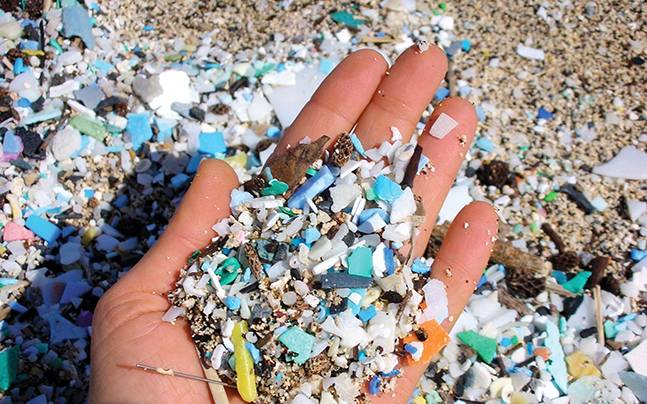
New research shows stormwater is the primary source of microplastics in coastal waters – here’s how to prevent it.
Every year, seven trillion tiny pieces of plastic – equivalent to about a million pieces each for every man, woman and child in the Bay Area – flow into San Francisco Bay. That’s according to new findings from a three-year study conducted by the San Francisco Estuary Institute and 5 Gyres. Researchers determined that billions of microplastics flow through the Bay Area’s 40 wastewater treatment facilities each year. Most importantly, it found that stormwater is the primary source of microplastics in California’s coastal waters.
Previous studies have focused on how microplastics – tiny pieces of plastic that measure less than five millimeters in size – can be shed from washing synthetic fibers or flushing baby wipes. This new research shows that they are 300 times more likely to come from storm drains, which capture plastic litter. Especially during the wet winter months, storm drains deliver this debris to our waterways and, eventually, to the San Francisco Bay, where the plastic breaks down into microplastics but never fully disappears. From there, microplastics can work their way up the food chain: Today 92% of bottled and 82% of tap water are contaminated by this type of plastic.
How can we prevent microplastic pollution? Most important is to increase the amount of water we recycle and stormwater we capture so that we can filter out plastic before it becomes a problem. That’s where California Coastkeeper Alliance comes in: Our advocacy prioritizes strategies to improve water quality while providing a new source of drinking water to California communities. In 2017, we co-sponsored legislation that became a law requiring the state to develop first-in-the-nation regulations allowing utilities to deliver purified recycled water directly to customers by 2023.
Most cities in California use water once, then dispose of it like waste. Hundreds of billions of gallons of treated wastewater are dumped into the ocean instead of being purified for potable uses. Like many other recycled materials, water can be reused. Water recycling offers a significant untapped supply, particularly in coastal areas facing shortages or in areas that rely on imported water.
California can capture and reuse enough stormwater to serve the entire City of Los Angeles by using rain gardens, green roofs, permeable pavements, and rain barrels. However, one of the largest obstacles to California realizing the potential for stormwater capture is the California Constitution, which prevents local governments’ ability to finance stormwater management in the same way as utilities like water, electricity, and garbage collection. That’s why this year CCKA is supporting efforts to reform water financing to allow stormwater fees to follow the same approval process as other essential municipal services. We are also working with the State Water Board to find creative ways to incentivize stormwater capture projects, and targeting specific microplastic-focused legislation for 2020.
By creating a drought-resilient water supply, reducing wastewater and stormwater discharges to the ocean, and preventing microplastic pollution, water recycling and stormwater capture is a wise municipal investment. We will continue to champion legislative reforms to accelerate and expand water recycling projects, while requiring stormwater capture regulations to protect public health and the environment.
Because water is life. And microplastics have no future in it.

Executive Director Sean Bothwell leads CCKA’s initiatives to fight for swimmable, fishable, and drinkable waters for all Californians.



